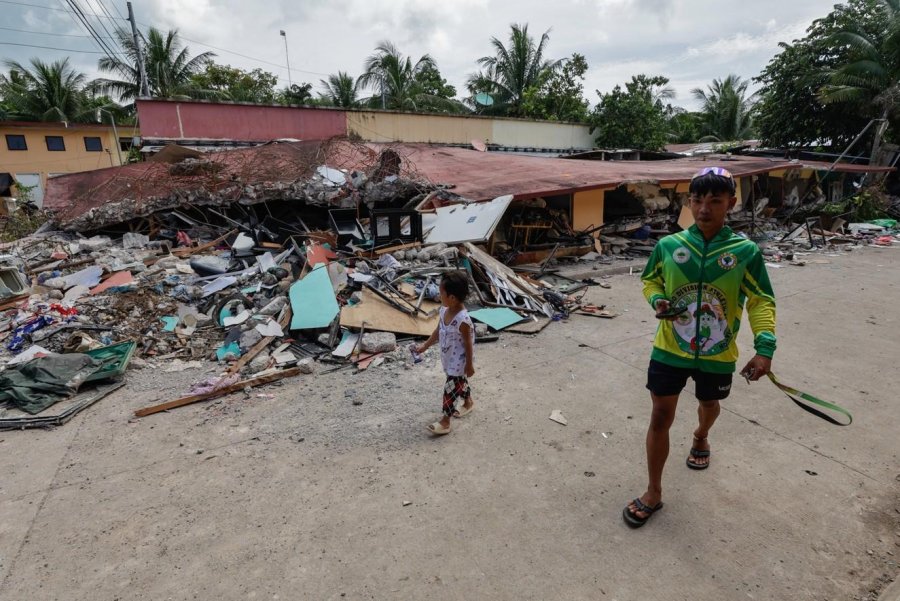Oct. 3 (UPI) — Typhoon Matmo struck northern Philippines on Friday, three days after a 6.9-magnitude earthquake hit the central part of the Asian nation hundreds of miles away and weeks after two other cyclones hit the country.
Matmo, which is locally named Paolo, had maximum sustained winds of 81 mph with the eye at San Guillermo in Isabela Province, the national weather agency Pagasa said.
Pagasa warned of “lightly stronger/enhanced in coastal and upland/mountainous areas exposed to winds. Winds are less strong in areas sheltered from the prevailing wind direction.” Also, rough seas are forecast.
More than 8 inches of rain are predicted on Isabela, Aurora and Quirino provinces.
Because of the storm, government agencies and schools were closed in the northern provinces’ main Luzon island, GMA News reported. Also, more than a dozen domestic flights were canceled, according to the Civil Aviation Authority of the Philippines.
After crossing Luzon, Matmo is forecast to re-emerge into the South China Sea and will strengthen because of warm ocean waters and weak cross-winds, according to the US Navy’s Joint Typhoon Warning Center.
A second landfall is expected in southern China’s Leizhu Province, according to the Hong Kong Observatory.
Caritas Philippines is providing relief to victims of Matmo and the earthquake.
“We are constantly faced with various risks and disasters, but it is through fraternal cooperation and unity among our dioceses that we find strength,” Jeanie, the humanitarian head of the organization, said. Together, we continue our humanitarian mission — to save lives, reduce suffering, and uphold the dignity of every human person.”
Caritas noted in Masbate and Romblon, homes, schools, parish buildings and infrastructure were badly damaged. Electricity, water supply and telecoms remain down in many areas with slow road access.
“Displaced families are facing increasing challenges as daily life becomes more difficult,” the nonprofit said. “Across affected areas, people are living in makeshift conditions, unable to return safely to their homes, and are struggling with disrupted livelihoods and a lack of basic hygiene. The uncertainty of recovery continues to weigh heavily on communities.”
The Philippines has been struck by 16 cyclones this year.
Typhoon Bualoi hit the Philippines on Sept. 25. Bualoi caused at least 37 deaths and displaced thousands in the Philippines before hitting Vietnam, where 49 people died.
Three days earlier, Super Typhoon Ragasa, which at one time was the world’s strongest tropical cyclone of the year, struck the Philippines before landfall in southern China.
The Philippines are struck by 20 cyclones each year, Bloomberg News reported. In 2013, Super Typhoon Haiyan killed more than 6,000 people in the Philippines.
The earthquake affected a different part of the nation where more than 80,000 families affected out of about 366,000 people. Some families are “sleeping outside in unsafe conditions,” Caritas said.
“I still couldn’t process what has happened to us,” Arguel Estalicas told the BBC outside her home in Medellin, near the quake’s epicenter, where she slept with her family. “I am overwhelmed with the things we experienced in the last two days.”
Search and rescue are continuing.
Analysts have criticized officials for poor disaster management, though the geographical location makes it vulnerable to extreme natural hazards.
“We are in the Pacific Ring of Fire, and we’re exposed to earthquake hazards,” Mahar Lagmay, a geologist from the University of the Philippines and the executive director of Project NOAH, a disaster risk reduction, told the South China Morning Post. “That’s something we should take advantage of … the earthquake per se does not kill.”
He added: “We should be looking at all of the hazards together … we should prepare and anticipate for the worst-case events, including climate change scenarios that are bigger than what we have experienced.”
He advocates creating maps documenting disasters.
“Our ancestors and we have been surviving in this area for quite some time,” Ven Paolo Valenzuela, a research fellow at Singapore Management University’s College of Integrative Studies who is an expert in climate change, told the the South China Morning Post. “These are not new risks.”
The United Nations estimates every $1 invested in disaster prevention would lead to $7 to $8 saved in disaster response. Valenzuela asked if the Philippines has “been investing in that dollar. And once a disaster strikes, how sure are we that the $8 is actually going towards proper response and building back better?”
There has been an ongoing flood-control scandal of allegations of corruption, ghost projects and substandard infrastructure.

